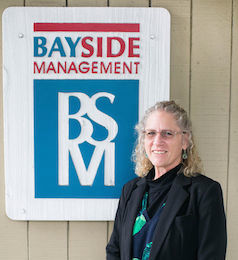
If you’re like most consumers, you have probably embraced at least some of the Smart Home technology that’s available. In your own home, you might have Smart devices or appliances that start and end with the tap of an app.
This type of technology is gaining popularity in homes across the country, especially as Artificial Intelligence (A.I.) makes things even more automated.
Have you considered providing this type of technology in your San Mateo rental home? It’s a great way to stay competitive, and it can also help you increase your rental values. Tenants will find this type of technology to be an attractive feature in a rental home. If you’re thinking about installing smart home devices and similar systems in your rental property, take some advice from a Peninsula property management company. There are a few things to consider.
Deciphering the Different Types of Smart Home Technology
What should you install and how important are these things to making your rental property more attractive to qualified tenants? These are some of the most common smart home devices found in rental properties:
- Smart locks. These allow you to grant access to tenants remotely or with a code. You can change the code between tenants or when you have a vendor showing up for work. There’s no need to worry about lost keys or rekeying the property between tenants. These also come in handy when you’re leasing your home. Self-showing technology is extremely beneficial to tenants and owners because it moves the leasing process along more efficiently. Look for a smart lock that includes a programmable keypad or a lockbox. You can also download an app to unlock doors.
- Video doorbells. Tenants will be able to see who is at the door and who is approaching the property. Exterior cameras like those on a doorbell can also help keep a home secure when it’s vacant. These have been popular in single-family homes for a while, and now they’re more common in multi-family units as well.
- Smart lighting. Your tenants can set the lights in the property to timers or control them on their smartphones. Exterior lights can also be motion activated. This is good for security, and the interior lights will help tenants keep electricity costs down. It’s more intuitive and a greener way to keep the lights on in your rental home.
- Security systems. These can be great for extra safety. A lot of the available security systems are expensive to install and they often require long term contracts. You may want to offer the system but require the tenants to pay the monthly charge or activation fees.
- Voice-activated assistants. Amazon’s Alexa and Apple’s Siri are features that many tenants are already using. Including them in smart homes can help streamline and centralize all the other technology that may be available.
- Smart thermostats. Like lighting, the smart thermostats you install can intuitively decide when to cool or heat a room, depending on its temperature and whether anyone is home. These can be programmed for time of day as well. It’s great for keeping energy costs down and conserving electricity.
This is just a collection of highlights. Smart home technology also includes vacuums and appliances that seem to think for themselves. What you have to ask, as a rental property owner, is whether it’s possible to be too smart when it comes to your San Mateo rental property.
Pros and Cons of Smart Home Tech
Smart Home technology will increase your rental value and the value of your investment. You’ll also attract some great tenants by providing features they’re looking for in a home. Additional benefits include:
- Better security. The home is more protected when it’s occupied by tenants and when it’s vacant. Unoccupied properties are vulnerable to thieves and troublemakers, but when you have smart home systems installed to track and even record the people coming and going, you’ll have fewer risks while it’s vacant.
- Easier turnovers – particularly with smart locks. There may be less deterioration and wear and tear to clean up too, thanks to certain smart home technology that allows for easier maintenance.
- Energy costs may be lower – which is great if you pay for utilities and a good selling point during your marketing if tenants pay.
However, there are some unique challenges as well to rental homes that adopt this sort of technology. Here are some of the negatives you may want to consider:
- There’s a significant upfront cost. You’ll likely have to invest hundreds of dollars to install these systems. While you don’t have to install all the smart home tech that’s available, even putting in a video doorbell or a thermostat will cost you money.
- Wi-Fi will need to be enabled. It’s how the smart systems work.
- Privacy concerns may be an issue. Renters might actually not want these things installed in their home, for fear you’ll be watching or listening.
Smart home technology needs to be a balancing act. If you’d like some help working through the
Let Tenants Decide on Technology When Appropriate
Some of this new technology is beneficial, and homes are definitely getting smarter. Just be sure that you know what you are buying and why you are buying it. While most tenants embrace Smart Home technology, there are also still tenants who don’t trust online rental payments. Not everyone has the same comfort level when it comes to automation and apps.
If the tenant chooses to install Smart Home technology at their expense, you should absolutely allow it.
Get some additional advice from a Peninsula property management company. As property managers, we can offer advice about removing or keeping the systems you might already have installed, and we can help you explore the benefits and the drawbacks for your particular property.
 Please contact us at Bayside Management. We lease, manage, and maintain investment properties in San Mateo and around the Peninsula, including San Carlos, Redwood City, Pacifica, San Bruno, Half Moon Bay, Daly City, Mountain View, Foster City, and Palo Alto.
Please contact us at Bayside Management. We lease, manage, and maintain investment properties in San Mateo and around the Peninsula, including San Carlos, Redwood City, Pacifica, San Bruno, Half Moon Bay, Daly City, Mountain View, Foster City, and Palo Alto.
 Peter Boda
Peter Boda Jeff Hacker
Jeff Hacker Dylan Motchar
Dylan Motchar Barbara Boyd
Barbara Boyd Joanelle Russell
Joanelle Russell Mary Wiegmann
Mary Wiegmann Joseph DeNoia
Joseph DeNoia Beth Nagy
Beth Nagy Jasmin Peraza
Jasmin Peraza Carmin Wong
Carmin Wong Pauline Smith
Pauline Smith Victoria Taylor
Victoria Taylor Yvette Perreca
Yvette Perreca Elizabeth Valladares
Elizabeth Valladares Anthony Thompson
Anthony Thompson Drew Reischl
Drew Reischl Nick Lange
Nick Lange Collette Counter
Collette Counter Justin Barton
Justin Barton